Regina Daniels D’24 has a motto: “Let’s strive and fly.”
“Don’t limit yourself because only the skies are the limit,” she adds.
As she presents during Saint Mary’s June graduate commencement ceremony in Minneapolis, Daniels hopes to inspire others.
“I am honored, especially being a black woman who is deaf getting her doctorate,” she signed. “When barriers come up, I want them to know, If I can do it, anyone can do it.”
Daniels has always looked at obstacles as adventures.
Growing up in a deaf family, her first language was ASL. And her first love was dance. Even as a child, others could see she was born to perform.
“I started dancing at the age of 3,” she signed. A teacher saw Daniels dancing and told her, ‘Wow, Girl, you can dance. You’re little, but you can dance.’ She prompted Daniels’ mother to enroll her in a dance club.
Daniels felt the vibrations of the bass on the floor to help her keep tempo. Sometimes a hearing aid can help her further connect to the rhythm. Other times, she watched for head bobs from the audience or for them to tap their feet.
She danced her way to a bachelor’s degree in dance and a master’s degree in Performance Arts Management and performed with a variety of dance companies.
Then, others began to see the teacher in her — even if she was skeptical at first.
“I said, ‘I don’t think so,’ ” Daniels signed. “They said you already have a performance background, and you make students feel inspired and want to learn.”
“I stopped dancing when I was in the master’s program,” she explained, adding, “It’s quite difficult to be in dance companies because of travel and the high expectations of training and practice, and I didn’t have an interpreter during the traveling portions. I was still learning about my own rights as a deaf individual. I was working full time and going to school at night, so it was impossible to dance too.
“I also thought, ‘I need to make a living.’ So I decided to actually become a teacher. Performance is still incorporated into my work as an interpreter. I grew up with a deaf family so I feel like I’ve been teaching language all my life. I’m able to communicate with people and navigate the world just fine. But I didn’t know how to teach, and develop the curriculum. I was pretty resistant.”
Following the structure of the book she used in her ASL 1 classroom, she began to gain confidence. “I have used interpreters for a variety of points in my life. How can I help influence those students to become amazing interpreters? Many have become fantastic interpreters today. I have to give back. It’s a gift that came from God and how can I use that? I saw the need out there,” she signed.
Daniels is now a full-time program director and associate professor at North Central University (NCU) in Minneapolis, and program director and lead American Sign Language instructor in the Carlstrom Interpreter Training Program, based at NCU.
She teaches college-age hearing students to become interpreters, and she also teaches them deaf culture, what’s appropriate or not appropriate.
“We are not broken. We just can’t hear. It’s helping students understand that. How can we lead — not in front of or behind — but alongside an individual?”
Daniels admits that Saint Mary’s Ed.D. program was her third.
“The first one, I started for two years and struggled to get through the program. I thought it was what I wanted but it wasn’t. The second, I still wasn’t sure. The third go around, Saint Mary’s was recommended. I was very new (to the area) but several teachers had gone to Saint Mary’s for this program,” she explained.
After meeting with the program director, Dr. Jack McClure, Daniels said, ‘I’m ready to wrap it up.’
Finding interpreters and working through accessibility issues the first year wasn’t easy, but she said she found the help she needed. “I needed a live interpreter, and Saint Mary’s was instrumental in figuring out what that would look like for me. All the teachers worked with me and made sure everything was set up. They were very accommodating. They were like, ‘What do you need?’ They provided that access and were able to meet me where I was at.
“That’s why I was able to graduate. I was able to actually finish it and have access to the information that I needed. I am grateful for their support and their willingness to learn.”
She nods when asked if what she learned was applicable to her work. “I have learned so much that has improved my own teaching,” she signed.
“During the second year, we learned about how to make course improvements and how to organize the sequence, which was something I needed in my own program. Because of Saint Mary’s instruction, I learned leadership skills, how to talk with people, how to design things, and what students need in terms of access. Even today, I know students get a bigger benefit because of how the curriculum is structured. We’re able to pull in trends. Those classes taught me, don’t just keep the old things. Preserve the knowledge but tailor it to the needs of current students. Everything I learned I instantly applied.”


